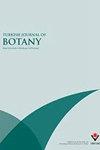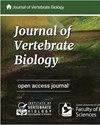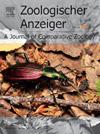期刊缩写:
Turk. J. Bot.
影响因子:
1.5
ISSN:
print: 1300-008X
on-line: 1303-6106
on-line: 1303-6106
研究领域:
PLANT SCIENCES
创刊年份:
1994年
h-index:
31
自引率:
5.60%
Gold OA文章占比:
0.00%
原创研究文献占比:
95.65%
SCI收录类型:
Science Citation Index Expanded (SCIE) || Scopus (CiteScore)
期刊介绍英文:
The Turkish Journal of Botany is published electronically 6 times a year by the Scientific and Technological Research Council of Turkey (TÜBİTAK) and accepts manuscripts (in English) covering all areas of plant biology (including genetics, evolution, systematics, structure, function, development, diversity, conservation biology, biogeography, paleobotany, ontogeny, functional morphology, ecology, reproductive biology, and pollination biology), all levels of organisation (molecular to ecosystem), and all plant groups and allied organisms (algae, fungi, and lichens). Authors are required to frame their research questions and discuss their results in terms of major questions in plant biology. In general, papers that are too narrowly focused, purely descriptive, or broad surveys, or that contain only preliminary data or natural history, will not be considered (*).
The following types of article will be considered:
1. Research articles: Original research in various fields of botany will be evaluated as research articles.
2. Research notes: These include articles such as preliminary notes on a study or manuscripts on the morphological, anatomical, cytological, physiological, biochemical, and other properties of plant, algae, lichen and fungi species.
3. Reviews: Reviews of recent developments, improvements, discoveries, and ideas in various fields of botany.
4. Letters to the editor: These include opinions, comments relating to the publishing policy of the Turkish Journal of Botany, news, and suggestions. Letters should not exceed one journal page.
(*) 1. Raw floristic lists (of algae, lichens, fungi, or plants), species descriptions, chorological studies, and plant sociology studies without any additional independent approaches.
2. Comparative morphology and anatomy studies (that do not cover a family, tribe, subtribe, genus, subgenus, section, subsection, or species complexes with taxonomical problems) without one or more independent additional approaches such as phylogenetical, micromorphological, chromosomal and anatomical analyses.
3. Revisions of family, tribe, genus, subgenus, section, subsection, or species complexes without any original outputs such as taxonomical status changes, IUCN categories, and phenological and ecological analyses.
4. New taxa of all plants without any additional independent approaches such as phylogenetical, ecological, chromosomal, chorological and correlational analyses in addition to a detailed macro- and micro-morphological descriptions with quality field and microscopic illustrations of taxonomically important structures and identification key in the taxonomic group.
New records of all plants without any additional independent approaches such as phylogenetical, ecological, chromosomal, chorological and correlational analyses in addition to a detailed macro- and micro-morphological descriptions with quality field and microscopic illustrations of taxonomically important structures and identification key in the taxonomic group may be accepted for peer review if they contain 3 or more new records or taxonomical status update, such as lectotypification, new combinations, transfers, revivals and synonyms.
5. New taxa of algae, lichens, and fungi without any additional independent approaches such as phylogenetical, ecological, chromosomal, chorological and correlational analyses in addition to a detailed macro- and micro-morphological descriptions with quality field and microscopic illustrations of taxonomically important structures and identification key in the taxonomic group.
New records of algae, lichens, and fungi without any additional independent approaches such as phylogenetical, ecological, chromosomal, chorological and correlational analyses in addition to a detailed macro- and micro-morphological descriptions with quality field and microscopic illustrations of taxonomically important structures and identification key in the taxonomic group may be accepted for peer review if they contain 5 or more new records or taxonomical status update, such as lectotypification, new combinations, transfers, revivals and synonyms.
CiteScore:
| CiteScore | SJR | SNIP | CiteScore排名 |
|---|---|---|---|
| 2.9 | 0.363 | 0.811 | 学科 排名 百分位 大类:Agricultural and Biological Sciences 小类:Plant Science 213 / 516 58% |
发文信息
中科院SCI期刊分区
2025年3月20日发布
| 大类 | 小类 | TOP期刊 | 综述期刊 |
|---|---|---|---|
| 4区 生物学 | 4区 植物科学 PLANT SCIENCES | 否 | 否 |
2023年12月发布
| 大类 | 小类 | TOP期刊 | 综述期刊 |
|---|---|---|---|
| 4区 生物学 |
4区
植物科学
PLANT SCIENCES
|
否 | 否 |
WOS期刊分区
| 学科分类 |
|---|
Q3PLANT SCIENCES |
历年影响因子
| 2015年 | 1.1780 |
|---|---|
| 2016年 | 1.0470 |
| 2017年 | 1.0660 |
| 2018年 | 1.0870 |
| 2019年 | 1.1090 |
| 2020年 | 1.4890 |
| 2021年 | 1.4290 |
| 2022年 | 1.8000 |
| 2023年 | 1.5000 |
| 2024年 | 1.5000 |
历年发表
| 2012年 | 85 |
|---|---|
| 2013年 | 120 |
| 2014年 | 111 |
| 2015年 | 106 |
| 2016年 | 68 |
| 2017年 | 60 |
| 2018年 | 69 |
| 2019年 | 74 |
| 2020年 | 61 |
| 2021年 | 62 |
| 2022年 | 31 |
投稿信息
出版周期:
Bimonthly
出版语言:
English
出版国家(地区):
TURKEY
审稿时长:
6-12 weeks
出版商:
Turkiye Klinikleri Journal of Medical Sciences
编辑部地址:
TUBITAK SCIENTIFIC & TECHNICAL RESEARCH COUNCIL TURKEY, ATATURK BULVARI NO 221, KAVAKLIDERE, ANKARA, TURKEY, 00000
Turkish Journal of Botany - 最新文献
Influence of rootstock age and gibberellin on the survival rate of clove (Syzygium aromaticum L. Merr. & Perr.) grafting
Pub Date : 2023-11-22 DOI: 10.55730/1300-008x.2784 Ireng Darwati, R. Suryadi, N. Bermawie, O. Trisilawati, D. Rusmin, Sri Wahyuni, Siswanto Siswanto, R. GarvitaBeta-carbonic anhydrase gene expression levels change depending on the drought severity in both the leaves and roots of Arabidopsis thaliana
Pub Date : 2023-11-22 DOI: 10.55730/1300-008x.2783 Sertan Çevik, Oğuzhan Kurt, Ayşi̇n GÜZEL DEĞER, F. Kocacinar, Riza BinzetA new species of Parasola section Conopileae (Psathyrellaceae) from Pakistan
Pub Date : 2023-11-22 DOI: 10.55730/1300-008x.2788 Zaman Khan, Muhammad Awais Arshad, A. R. Niazi, Abdul Nasir Khalid
免责声明:
本页显示期刊或杂志信息,仅供参考学习,不是任何期刊杂志官网,不涉及出版事务,特此申明。如需出版一切事务需要用户自己向出版商联系核实。若本页展示内容有任何问题,请联系我们,邮箱:info@booksci.cn,我们会认真核实处理。
本页显示期刊或杂志信息,仅供参考学习,不是任何期刊杂志官网,不涉及出版事务,特此申明。如需出版一切事务需要用户自己向出版商联系核实。若本页展示内容有任何问题,请联系我们,邮箱:info@booksci.cn,我们会认真核实处理。








